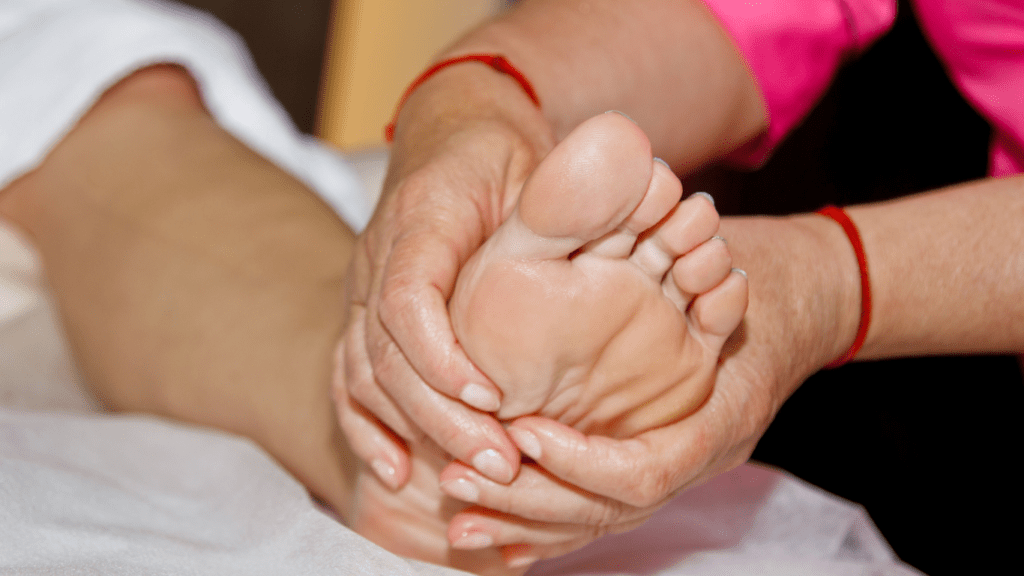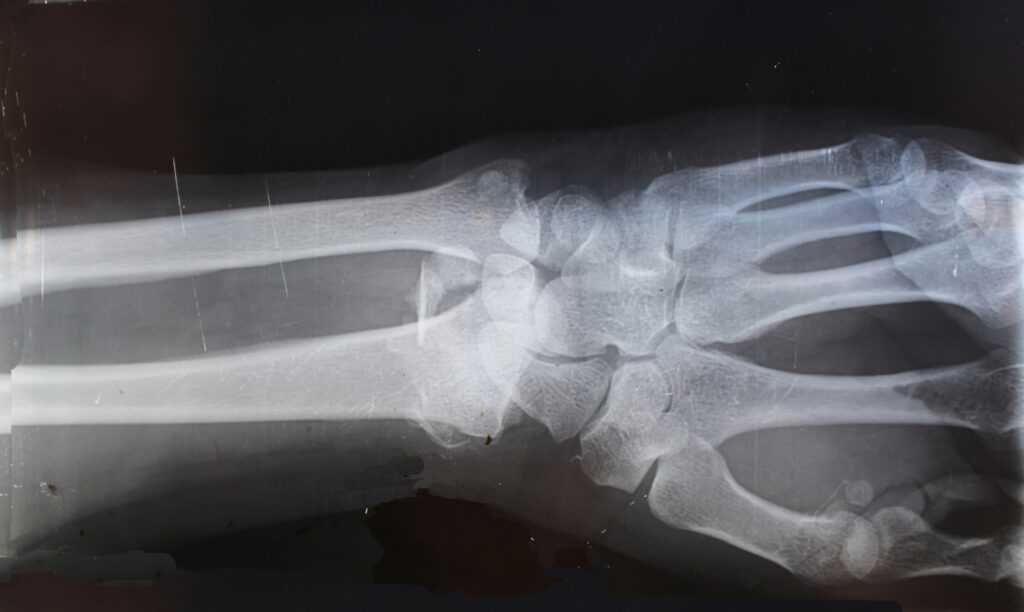Understanding Plantar Fasciitis
Plantar fasciitis causes sharp heel pain and impacts daily activities. Understanding what triggers this condition helps in managing it effectively.
Causes and Symptoms
Plantar fasciitis occurs when the plantar fascia ligament gets inflamed. Located at the bottom of the foot, this ligament supports the arch and absorbs shock when you walk. Excessive tension and stress cause small tears, leading to inflammation and pain.
Common symptoms include:
- Heel pain, especially after long periods of rest
- Stiffness and discomfort after waking up
- Increased pain post-exercise, not during
Risk Factors
Certain factors increase the likelihood of developing plantar fasciitis. These include:
- Age: Common between ages 40-60
- Occupation: Jobs that involve long periods of standing or walking (e.g., teachers, factory workers)
- Foot Mechanics: Flat feet, high arches, or abnormal walking patterns
- Obesity: Extra weight puts more stress on the plantar fascia
By recognizing these risk factors, one can take proactive steps to prevent and manage plantar fasciitis effectively.
Managing Plantar Fasciitis at Home
Effective at-home management of plantar fasciitis helps reduce pain and prevent recurrence. Proper footwear, orthotics, and targeted exercises are essential components.
Footwear and Orthotic Recommendations
Wearing supportive shoes minimizes strain on the plantar fascia. I recommend choosing shoes with good arch support and cushioning. Avoid flat shoes and high heels since they offer little support.
Use orthotic inserts to provide additional arch support. Custom orthotics, although more expensive, offer personalized support that’s often more effective than over-the-counter versions.
Stretching and Strengthening Exercises
Regular stretches relieve tension in the plantar fascia. I find calf stretches beneficial; simply lean forward onto a wall with one leg extended behind you and hold for 30 seconds.
Another helpful exercise involves a towel. Sit with your legs extended, loop the towel around your foot, and gently pull towards you.
Strengthening exercises like toe curls and picking up marbles with your toes bolster foot muscles, providing better support for the heel. Consistency in these routines significantly alleviates symptoms.
Medical Treatments for Plantar Fasciitis
Effective medical treatments for plantar fasciitis can significantly alleviate pain and reduce inflammation.
Medications and Injections
Nonsteroidal anti-inflammatory drugs (NSAIDs), such as ibuprofen and naproxen, help manage inflammation and pain in the affected area.
These medications can provide temporary relief, especially during acute flare-ups. Corticosteroid injections are used if the pain is severe and persistent.
Administered directly into the plantar fascia, these injections reduce inflammation and provide rapid pain relief, but frequent use may increase the risk of fascia rupture.
Platelet-rich plasma (PRP) injections, derived from the patient’s blood, promote healing and reduce inflammation.
Physical Therapy Approaches
Physical therapy focuses on stretching and strengthening the muscles and ligaments surrounding the foot and ankle. Techniques include manual therapy, where a therapist manipulates soft tissues to reduce tension and improve flexibility.
Ultrasound therapy uses sound waves to promote tissue healing and reduce pain.
Custom orthotics, prescribed by a physical therapist, support the arch and distribute pressure evenly to alleviate stress on the plantar fascia.
Combining these methods accelerates recovery and prevents recurrence by addressing the underlying biomechanical issues.
Advances in Plantar Fasciitis Relief

Innovations in plantar fasciitis treatments have significantly improved pain relief and recovery times.
Orthotics and Bracing Innovations
Orthotics and bracing have evolved to provide better support and relief for plantar fasciitis sufferers. Custom orthotics, designed based on 3D foot scans, ensure a precise fit and targeted support.
This tailored approach helps distribute pressure evenly, reducing strain on the plantar fascia. Advanced materials like carbon fiber and silicone enhance durability and comfort.
Night splints, which maintain a gentle stretch in the foot overnight, prevent morning stiffness and pain. Day braces, designed for active wear, offer stability and support, allowing individuals to maintain daily activities without exacerbating symptoms.
Emerging Treatment Modalities
Emerging treatments offer new avenues for managing plantar fasciitis. Extracorporeal shockwave therapy (ESWT) uses sound waves to promote healing and reduce pain.
ESWT has shown promising results in both acute and chronic cases.
Platelet-rich plasma (PRP) injections, utilizing the patient’s own blood to stimulate tissue repair, have gained popularity due to their regenerative potential.
Low-level laser therapy (LLLT) offers a non-invasive option to reduce inflammation and promote tissue healing.
Studies indicate that LLLT can accelerate recovery times. These modalities provide additional options for patients seeking to alleviate symptoms and enhance foot function.
Prevention Techniques for Plantar Fasciitis
Prevention techniques can significantly reduce the risk of developing plantar fasciitis. By addressing lifestyle and activity modifications and regular foot care routines, individuals can effectively manage and prevent this common foot condition.
Lifestyle and Activity Modifications
Adopting specific lifestyle and activity modifications helps in preventing plantar fasciitis. Ensure maintaining a healthy weight as excess weight increases the stress on the plantar fascia.
Choose supportive shoes with good arch support and cushioning. Avoid high heels and opt for shoes with a low to moderate heel height to minimize strain on your feet.
Incorporate low-impact activities, like swimming or cycling, into your exercise routine to avoid excessive impact on the feet. Transition gradually into new physical activities to allow your feet to adjust.
Take breaks during prolonged standing or walking sessions, and perform stretching exercises targeting the Achilles tendon and calf muscles to maintain flexibility and reduce tension in the plantar fascia.
Regular Foot Care Routines
Regular foot care routines play a crucial role in preventing plantar fasciitis.
- Perform daily stretching exercises for the feet, focusing on the plantar fascia and surrounding muscles.
- Use a golf ball or a specialized foot roller under the arch to gently massage the plantar fascia and promote blood flow.
- Keep your feet moisturized to prevent dry and cracked skin, which can contribute to discomfort and increase the risk of foot issues.
- Pay attention to your foot hygiene by washing your feet regularly and ensuring they are dry before putting on shoes.
- Trim toenails straight across to avoid ingrown toenails, which can cause additional stress and pain in the feet.
By integrating these prevention strategies, individuals can significantly lower their risk of developing plantar fasciitis and maintain better overall foot health.



